Intersection Accidents in Texas: Understanding Fault and Compensation
January 21, 2024
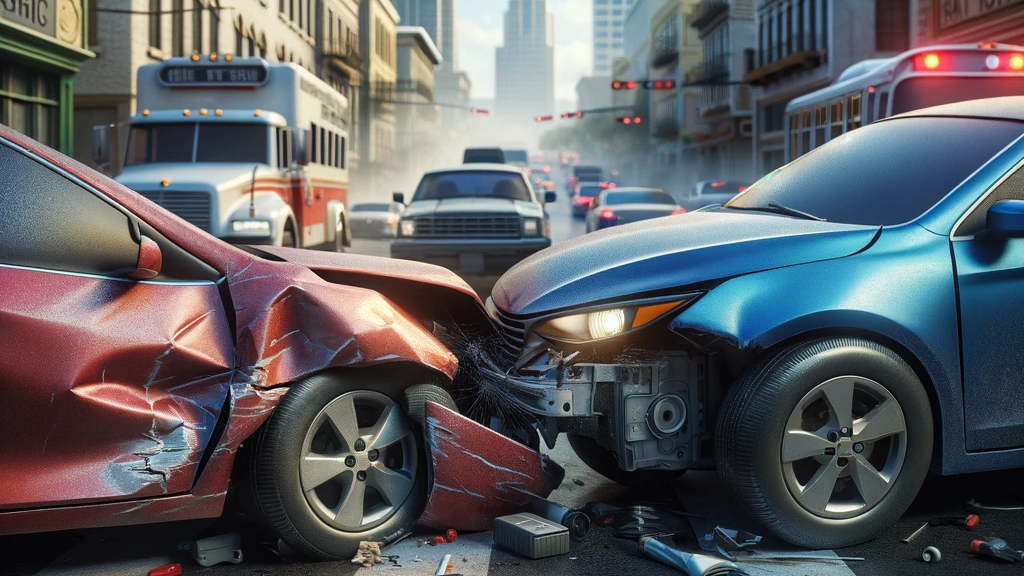
Every year, thousands of Texans face the chaos and confusion of intersection accidents. In 2021, the Texas Department of Transportation reported over 15,000 serious injury crashes, with a significant portion occurring at intersections. This alarming statistic is a stark reminder of the dangers lurking at every crossroad.
As a car accident lawyer, I’ve seen firsthand the impact these incidents have on victims and their families. One moment, you’re driving through an intersection; the next, your life is turned upside down by a sudden crash.
This article aims to shed light on the complex world of intersection accidents in Texas. From understanding your rights and the intricacies of negligence to the essential steps following an accident and building a strong case, this guide is designed to navigate you through the aftermath of an intersection collision. Whether you’re a recent victim or just seeking information, this guide will provide valuable insights into handling these challenging situations.
- Key Takeaways
- Understanding Intersection Accidents in Texas
- Legal Aspects of Intersection Accidents
- Texas Intersection Traffic Laws
- Right-of-Way Rules
- Red Light and Stop Sign Adherence
- Turning Laws
- Pedestrian Crosswalks
- Speed Limits Approaching Intersections
- Texas Negligence Law in Intersection Traffic Accidents
- Compensation Aspects
- Steps After an Intersection Accident
- Building Your Case
- Navigating Insurance Claims and Settlements After an Intersection Accident
- Conclusion
Key Takeaways
- Intersection accidents in Texas often involve complex legal considerations, including determining negligence.
- Immediate actions post-accident, like ensuring safety and calling the police, are crucial for your legal case.
- Gathering detailed evidence and documentation is key to building a strong personal injury claim.
- Understanding and navigating insurance claims and settlements can significantly impact your compensation.
- Seeking legal assistance early can help protect your rights and maximize your claim’s success.
Understanding Intersection Accidents in Texas
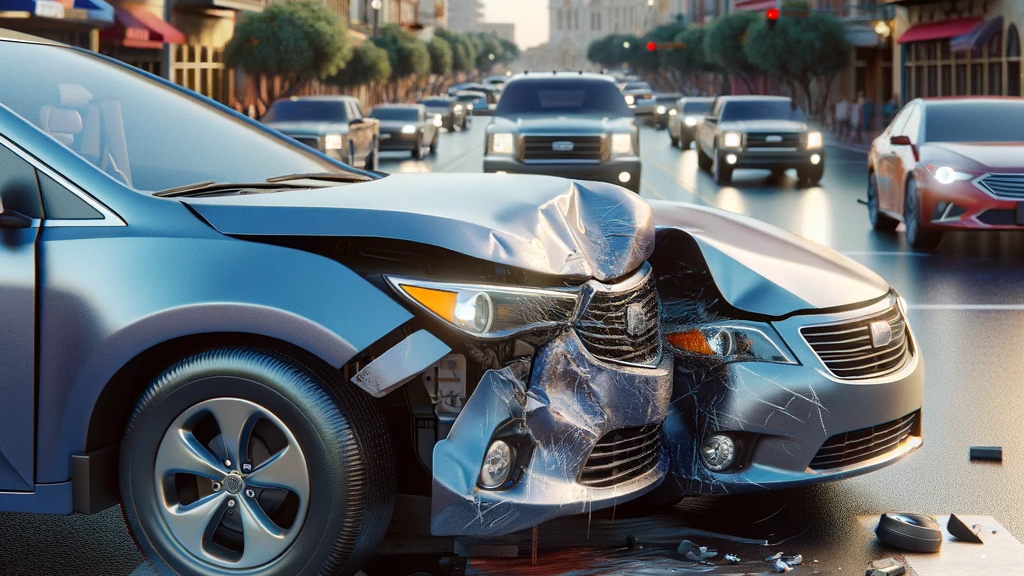
What is an Intersection Accident?
- An intersection accident happens where two roads cross.
- Common causes include running red lights and failing to yield.
- These crashes can be severe, leading to injuries or death.
Texas Statistics
- In Texas, many crashes occur at intersections.
- Data shows high rates in big cities like Houston and Dallas.
- These accidents often cause serious harm to people.
Types of Intersection Accidents
- T-bone Collisions:
- Occur when one car hits the side of another.
- Often happen with red-light running.
- Can cause major injuries due to side impact.
- Rear-end Crashes:
- When a car hits another from behind.
- Common at stop signs and lights.
- Often linked to distraction or tailgating.
- Side-swipe Incidents:
- Cars collide side-to-side.
- Happens during lane changes or merges.
- Can lead to loss of vehicle control.
Understanding the types of intersection accidents can help in knowing what steps to take next and how to handle your case. Each type of collision has different factors that affect the legal process.
Legal Aspects of Intersection Accidents
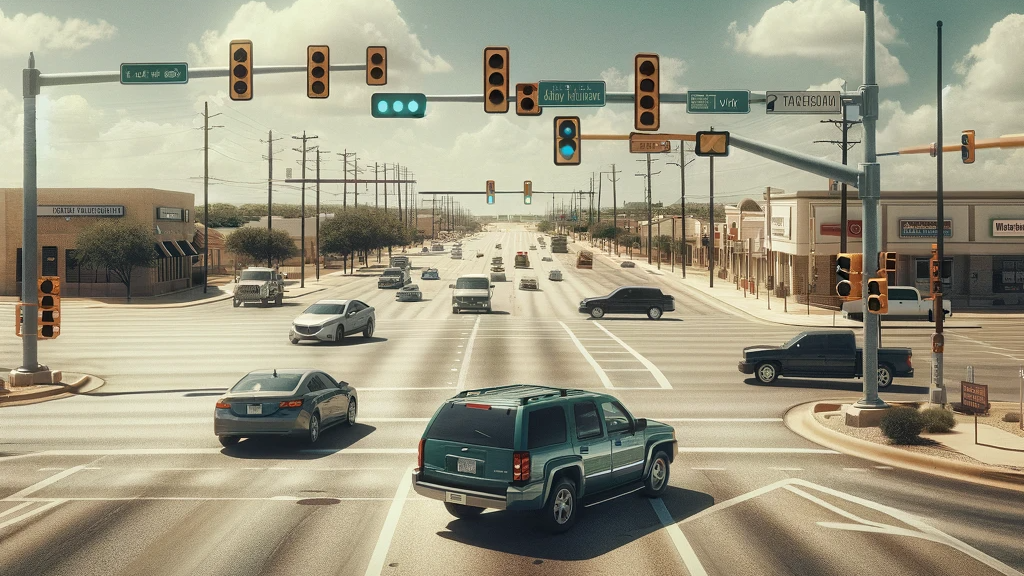
Texas Intersection Traffic Laws
Navigating Texas roads requires knowing key traffic laws, especially at intersections. These laws are crucial in determining fault in accidents.
Right-of-Way Rules
- Under Texas Transportation Code, drivers must yield the right-of-way at intersections.
- If two cars arrive at a stop sign at the same time, the car on the left must yield to the car on the right.
- When turning left, drivers must yield to oncoming traffic.
Red Light and Stop Sign Adherence
- Running a red light or stop sign is illegal, as per Texas Transportation Code.
- These violations often lead to intersection accidents.
- Cameras and police enforcement aim to reduce these incidents.
Turning Laws
- Texas law requires using turn signals at least 100 feet before turning.
- At intersections, drivers must turn into the lane closest to them.
- Illegal turns at intersections can lead to side-swipe or T-bone crashes.
Pedestrian Crosswalks
- Drivers must yield to pedestrians in crosswalks.
- Ignoring pedestrian right-of-way can result in serious penalties.
Speed Limits Approaching Intersections
- Drivers must slow down when approaching intersections.
- High speeds at intersections increase crash risks and severity.
Understanding these laws helps in both preventing accidents and determining fault in the event of a collision. Ignoring these rules can lead to legal consequences and liability in accidents. Familiarizing yourself with these regulations can significantly impact the outcome of a legal claim following an intersection accident.
Texas Negligence Law in Intersection Traffic Accidents
In Texas, understanding negligence law is crucial, especially regarding traffic accidents at intersections. Negligence determines who is at fault and thus liable for damages.
Definition of Negligence
- Negligence occurs when a driver fails to act with reasonable care.
- This includes violating traffic laws or driving recklessly.
- In intersection accidents, negligence can take many forms.
Proving Negligence
- To prove negligence, you must show the other driver’s duty, breach, causation, and damages.
- Duty means they had a responsibility to drive safely.
- Breach is failing this duty, causing the accident and resulting damages.
Comparative Fault
- Texas follows a “modified comparative fault” system.
- If you’re partly at fault, your compensation may be reduced.
- You can’t recover damages if you’re more than 50% at fault.
Hypothetical Examples
- Example 1: John runs a red light and hits Mary’s car in the intersection. John would likely be found negligent for violating traffic laws.
- Example 2: Sarah turns left at an intersection without yielding to oncoming traffic, causing a collision with Alex, who was speeding. Both may share fault under comparative negligence.
Impact on Claims
- Understanding negligence is vital for your claim.
- It affects how much compensation you may receive.
- A lawyer can help establish the other driver’s negligence.
In Texas, intersection accidents often involve complex scenarios where negligence needs to be determined accurately. Whether it’s running a red light, failing to yield, or reckless driving, establishing negligence is key to a successful claim. However, with Texas’ comparative fault rule, your role in the accident will also be scrutinized. Professional legal advice can help navigate these complexities and work towards proving the other party’s negligence while minimizing your own fault.
Compensation Aspects
- You may get money for your losses.
- This includes medical costs and car repairs.
- Pain and suffering are also considered.
Understanding these legal aspects is vital. Texas traffic laws set the rules for road safety. If a driver breaks these rules and causes an accident, they can be held responsible. This is where negligence comes in. Proving negligence is about showing the other driver was at fault. This can include things like running a red light or not stopping at a stop sign.
When it comes to compensation, the goal is to cover your losses. This includes clear costs like medical bills and car damage. But it also covers less clear impacts, like pain and suffering. Knowing these legal points helps in building a strong case for your claim.
Steps After an Intersection Accident
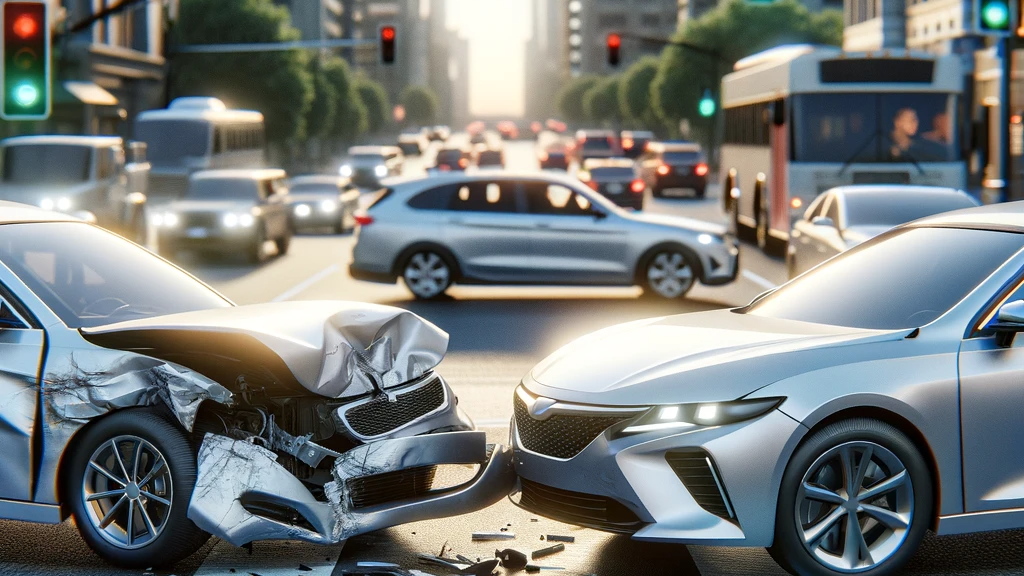
After an intersection accident, it’s crucial to take the right steps. These actions not only ensure your safety but also strengthen your legal case. Here’s what to do:
- Ensure Safety First:
- Move to a safe area if possible.
- Check for injuries.
- Call for medical help if needed.
- Call the Police:
- Report the accident immediately.
- A police report is vital for your case.
- Cooperate but avoid admitting fault.
- Seek Medical Attention:
- Even if injuries seem minor.
- Medical records are important evidence.
- Delayed symptoms can occur.
- Document the Accident:
- Take photos of the scene.
- Note down details like time and weather.
- Get contact info from witnesses.
- Contact a Lawyer:
- Seek legal advice as soon as you can.
- A lawyer will guide you through the process.
- They can help protect your rights.
These steps are key in the aftermath of an accident. They not only ensure your immediate safety but also lay the groundwork for any legal action you might pursue. Remember, the more evidence and information you gather, the stronger your case will be.
Building Your Case
After an intersection accident, building a strong case is crucial for a successful claim. Here’s how to do it:
- Collecting Evidence:
- Gather the police report. It’s a key document.
- Keep all medical records and bills.
- Collect witness statements if available.
- Working with Experts:
- Accident reconstruction experts can clarify what happened.
- Medical experts can speak to your injuries.
- Their insights add weight to your claim.
- Legal Strategy:
- Each case is unique. Tailor your approach.
- I’ll review every detail of your case.
- We’ll prepare a strategy that fits your situation.
Building your case involves gathering evidence, consulting experts, and forming a legal strategy. The evidence like police reports and medical records is the foundation of your claim. Experts can provide deeper insights into the accident and your injuries. Finally, a well-crafted legal strategy takes all this information and shapes it into a compelling case. This approach increases your chances of a favorable outcome.
Navigating Insurance Claims and Settlements After an Intersection Accident
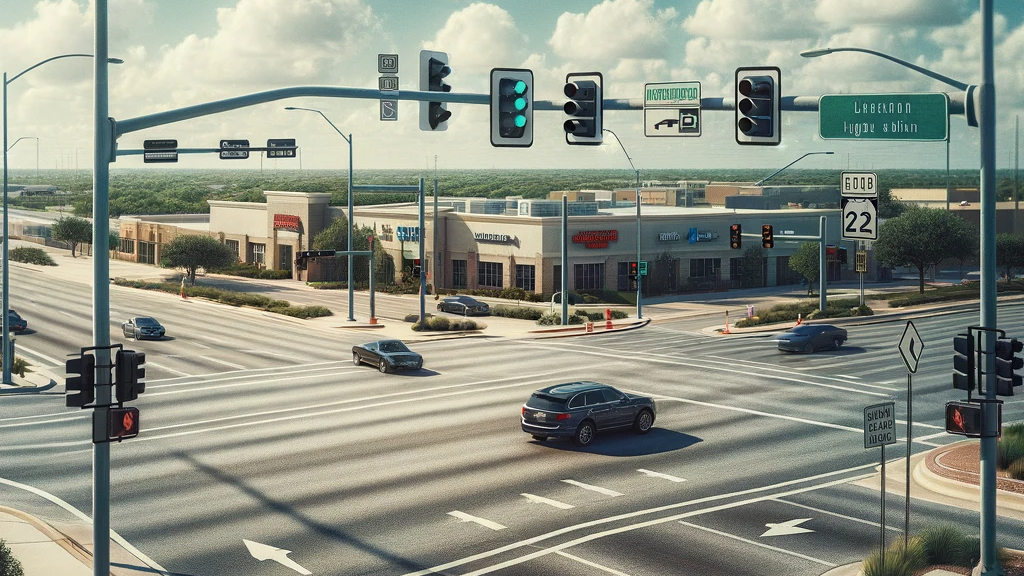
Dealing with insurance after an intersection accident can be complex. Here’s what you need to know:
Dealing with Insurance Companies
- Report the accident to your insurer promptly.
- Share facts but don’t admit fault.
- Be cautious with the other party’s insurer.
Settlement Negotiation
- Don’t accept the first offer quickly.
- Understand the full extent of your damages.
- A lawyer can help negotiate a fair settlement.
When dealing with insurance companies, timely and accurate reporting is essential. However, it’s important to be cautious in your communications. While you need to share the facts of the incident, avoid making statements that could be interpreted as admitting fault. Remember, the other party’s insurance company is not on your side.
Settlement negotiations are a critical stage. Insurance companies often start with a low offer. It’s important not to rush into accepting it. You need to fully understand the extent of your damages, including future medical expenses and lost earnings, not just immediate costs. A skilled lawyer can be invaluable in these negotiations, ensuring you receive a fair settlement that covers all your damages. Remember, a well-negotiated settlement can make a significant difference in your recovery and financial stability post-accident.
Conclusion
Navigating the aftermath of an intersection accident in Texas can be overwhelming. However, understanding your rights and the necessary steps can make a significant difference.
Here’s a quick recap:
- Intersection accidents are common and can be complex.
- Knowing Texas laws and the concept of negligence is crucial.
- Taking immediate and appropriate actions post-accident is key.
- Building a strong case involves gathering evidence and forming a strategy.
- Dealing with insurance companies requires caution and understanding.
If you find yourself in such a situation, remember, you’re not alone. Seeking legal help can provide the guidance and support you need to navigate this challenging time.